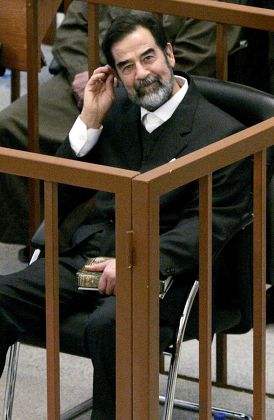
Early Life and Rise to Power
Saddam Hussein was born on April 28, 1937, in a village near Tikrit, Iraq. He came from a poor family and was raised by relatives. In 1957, he joined the Arab Ba'ath Party, a political movement that promoted Arab nationalism and socialism. By the late 1960s, Saddam played a key role in the 1968 Ba'athist coup that brought the party to power.
In 1979, Saddam assumed full control of Iraq, becoming president after the resignation of his mentor, Ahmed Hassan al-Bakr. Once in power, he quickly consolidated control through purges, intimidation, and the use of secret police.
The Iran-Iraq War (1980–1988)
One of Saddam’s most defining decisions was to invade Iran in 1980, sparking an eight-year war. He hoped to take advantage of the chaos following Iran’s Islamic Revolution, but the conflict turned into a bloody stalemate. The war devastated both countries and cost hundreds of thousands of lives.
Domestic Rule and Human Rights Abuses
Saddam’s regime was infamous for its brutality. He maintained power through widespread fear, torture, and mass executions. His most notorious act was the 1988 chemical attack on the Kurdish town of Halabja, where thousands of civilians were killed. International organizations have since labeled such actions as genocide.
The Invasion of Kuwait and the Gulf War
In 1990, Saddam invaded neighboring Kuwait, claiming it was historically part of Iraq. The move was condemned globally, leading to the U.S.-led Gulf War in 1991. Though Iraqi forces were quickly driven out of Kuwait, Saddam remained in power. The war resulted in severe economic sanctions and a no-fly zone over Iraq, further isolating the country.
The Fall of Saddam Hussein (2003)
In 2003, the United States, under President George W. Bush, invaded Iraq, accusing Saddam of possessing weapons of mass destruction (WMDs) and having ties to terrorism. No WMDs were found, but the invasion led to the rapid collapse of Saddam’s government.
Saddam went into hiding but was captured by U.S. forces in December 2003. He was found in a bunker near his hometown of Tikrit.
Trial and Execution
Saddam was tried by the Iraqi Special Tribunal for crimes against humanity, including the 1982 killing of 148 Shi’a men in Dujail. In 2006, he was found guilty and sentenced to death. He was executed by hanging on December 30, 2006.
Legacy
Saddam Hussein remains one of the most controversial figures in modern Middle Eastern history. To some, he was a strongman who maintained order; to others, a ruthless dictator responsible for immense suffering. His fall created a power vacuum that contributed to years of instability in Iraq, including the rise of extremist groups like ISIS.

You must be logged in to post a comment.